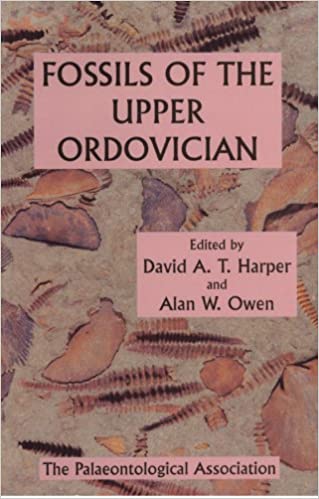Fossils of the Upper Ordovician
Palaeontological Association Field Guide to Fossils No 7
Edited by David A T Harper and Alan W Owen

Over the years (this guide was published in 1999), PalAss has create a wonderful library of guides to, usually, UK fossils, which the professional and amateur can use to identify and learn about the fossils they have found or want to find.
And this is another excellent example.
The British upper Ordovician has a spectacular variety of invertebrate fossils. The marine communities in which they lived developed on a number of microcontintents and terranes, associated with tectonically active areas of the Earth’s crust. The Iapetus Ocean was being squeezed, ultimately to death, between colliding plates, bringing together several different biogeographical provinces. And this resulted in the very diverse marine fossil faunas that can be found in the upper Ordovician of the UK.
For professional and amateur palaeontologists alike, Fossils of the Upper Ordovician is an introduction to identifying the fossils of the Upper Ordovician between 458 and 443 million years ago. As with all Palass guides, it is illustrated with black and white photographs and drawings, and provides an introduction to the geology, life in the late Ordovician seas, the tectonic and environmental setting and the stratigraphy. It then goes on to discuss the following animals types:
- Cnidarians.
- Bryozoans.
- Brachiopods.
- Bivalves.
- Cephalopods.
- Other molluscs.
- Trilobites.
- Graptolites.
- Echinoderms.
- Calcichordates.
This is a great guide if you want to explore this ancient geological time. If you are prepared to travel to the disparate locations involved, this guide is definitely for you.
Fossils of the Upper Ordovician, Edited by David A T Harper and Alan W Owen, The Palaeontological Association, London (1996), 312 pages (paperback), ISBN: 0901702579